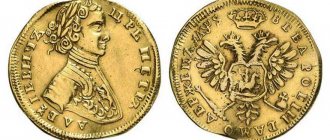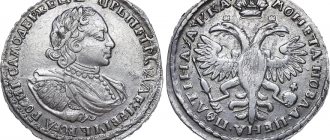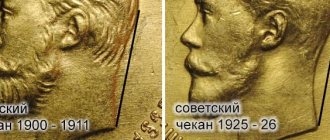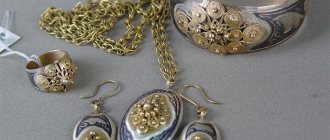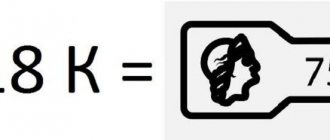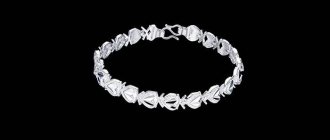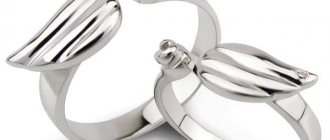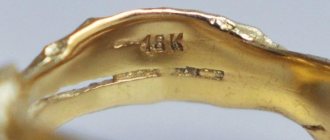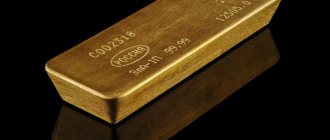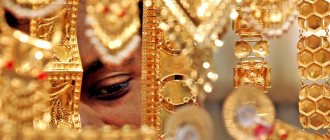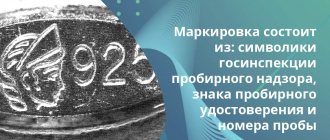Probably every adult resident of our country has at least once thought about starting to save for a rainy day. But in the current instability, it is difficult to choose a reliable area for investment. Rubles are depreciating, the exchange rate of other currencies and precious metals is unstable and subject to fluctuations, housing is deteriorating. Many people invest in the purchase of antiques and old gold coins, in particular, rightly believing that they will only become more expensive over time. Let's, for example, figure out how much the royal gold chervonets costs.
History of Nikolaev chervonets
Having barely ascended the throne in 1894, Nicholas 2 carried out some reforms. He adopted a new gold standard and ordered the minting of a new gold coin. It retained the same set of denominations, 900 fines of gold-copper alloy and the same metal consumption (a pound of pure gold was used to cast coins worth 317 rubles 35 kopecks).
The new money was widely used in the Russian Empire, was quoted abroad, and even the Bolsheviks, after coming to power, continued to use them for their intended purpose. The latter fact is associated with an explosive increase in the value of some Nikolaev gold coins on modern numismatic markets, but more on that later.
As a result of the monetary reform he adopted, the weight of gold ten-ruble notes was radically reduced, from 12.9 to 8.6 grams.
The country's economy in those days was developing rapidly and a lot of cash was required. Therefore, a great number of gold chervonets were stamped. Domestic mints could not cope; coinage was ordered from Europe and even Japan. The circulation of the 1907 edition alone is 11 million copies. In 1911, the production of these coins ceased.
And then we enter the realm of historical mysteries.
According to the catalog of coins of Nicholas 2, very few chervonets were issued in 1911, fifty thousand pieces.
But their actual number exceeds the declared one by several orders of magnitude even now, a century later, and in total there were 11 million copies.
Most likely, although there is no direct evidence of this, the Bolsheviks continued printing coins after the revolution. It is unknown where the stamps of the imperial mint went later. But it has been established that this gold coin is still minted to this day. Some of the chervonets that were brought for examination were no more than 10 years old.
How much a gold chervonets of a particular year of production costs, depending on its state of preservation, can be found in the table.
The cost of Nikolaev chervonets
| Year of issue | Price in thousands of rubles | ||||
| VF | XF | AU | UNK | PROOF | |
| 1911 | 22 | 30 | 30 | 43 | 283 |
| 1910 | 32 | 79 | 121 | 210 | 640 |
| 1909 | — | 22 | 30 | 118 | 579 |
| 1906 | — | — | 300 | 600 | 5800 |
| 1904 | — | 35 | 41 | 58 | 574 |
| 1903 | 14 | 30 | 32 | 51 | 323 |
| 1902 | 16 | 28 | 30 | 47 | 392 |
| 1901 | 10 | 31 | 30 | 111 | 538 |
| 1900 | 15 | 26 | 32 | 35 | — |
| 1899 | 16 | 27 | 29 | 51 | — |
| 1898 | 17 | 29 | 31 | 62 | 408 |
Quote: The answer to the question of how much the royal gold chervonets cost depends primarily on their authenticity. Since there are 20 times more fakes than originals, the average price of this banknote on the market is close to the actual cost of the gold it contains and equals 30 thousand rubles.
Description
Nicholas's gold chervonets is a small coin, its diameter is 22.6 mm, and its weight is 8.6 grams. Each contains 7.74 g. 900 gold. On the obverse is a bust of Nicholas, framed by text, on the reverse is the small coat of arms of the Russian Empire, below it is the denomination and year of minting.
It was minted in large quantities, with the exception of 1906 and 1907.
The minting on the edge, or, as numismatists call it, the edge of the chervonets, can also tell a lot. As mentioned above, part of the circulation was produced abroad. One star on the edge of the coin means that this piece was minted in Paris, two – in Brussels.
The most expensive ten-ruble notes
People who do not understand numismatics often mistake other gold coins of the same denomination, minted in the same period, for the Nikolaev gold chervonets. They can actually cost hundreds of thousands of dollars apiece. But first things first:
- 10 Rusov. In the first years of the reign of the last Sovereign, Finance Minister Witte tried to radically change the name of the Russian currency. By analogy with the French francs, they chose the name “Rus”. However, this word is not on the coin; instead, there is the inscription “2/3 IMPERIAL” on the reverse. The edge is smooth. On the obverse is a portrait of Nicholas. Five sets were made per sample, but then this idea was abandoned. The cost of the kit averages 400 thousand dollars. But only two can come to market, having gone into personal collections. The other three are in museums. In the Russian Historical Museum, the Hermitage and the American Smithsonian Museum.
- 10 rubles 1906 The cost of a gold chervonets of 1906 is 100–200 thousand dollars. The reason is simple - only 10 of them were cast on the occasion of the anniversary of Nicholas's coronation. The richest collectors from all over the world compete at leading auctions for the right to own these coins, driving up prices to incredible heights.
- Imperials. Beginning numismatists often confuse them with ordinary Nikolaev chervonets, although these are completely different monetary units. You can distinguish it by the inscription “IMPERIAL” on the reverse, above the coat of arms. They were minted for 3 years in a row, from 1895 to 1897, with a total circulation of 375 pieces. Imperials were minted according to the “Alexander foot”; they weigh 12.9 grams. The cost of one copy ranges from 30 to 60 thousand rubles.
Russian gold coins: the beginning
“Chervonets” have long been the name for foreign and Russian large denomination coins containing high-grade gold.
Stable production of such copies in Russia began under Emperor Ivan III (second half of the 15th century). At the same time, the first gold coin of Russian coinage - the “zlatnik” of the Kyiv prince Vladimir - was issued five centuries earlier.
Its official name is unknown. The minting of zlatnik was important from a political point of view: during this period, Kyiv asserted its importance and established new relations with neighboring states. Under Prince Vladimir, the country did not have its own gold; instead of Russian coins, they paid with Byzantine or Arab ones.
The solidus of the Byzantine emperor, a rival whom the Kiev prince looked up to, was taken as a model for coinage. Both coins are similar in weight, gold purity and images on the obverse and reverse.
11 known examples of this issue were found in treasures discovered in the 19th century. Ten of them are in museum collections; it is unknown who owns the eleventh. Modern collectors can purchase a zlatnik in the form of a commemorative gold copy, issued in honor of the millennium of ancient Russian coinage (denomination 100 rubles, edition 1988).
Proof of status
Issues of small circulations of gold coins under Ivan III are explained by almost the same reasons as under Prince Vladimir. The Emperor unites the Russian lands, destroys the Tatar-Mongol yoke, and streamlines the laws. The Byzantine double-headed eagle had already become Moscow's; the Grand Duke had a different goal during this period: to prove the equality of Russia and its European neighbors.
During this period, English and Hungarian coins (“shipman” and “Ugric” gold) were used as models for minting. In addition to these foreign gold coins, Venetian and Dutch ducats circulated in Muscovite Rus'. The word “Ugric” was used to describe both Russian and foreign coins: this definition indicated the purity of the metal. The state still had not established industrial gold mining, so new Russian editions were minted from melted down foreign ones.
It is possible that Moscow gold was sometimes used to pay, for example, specialists invited from abroad. However, they were usually intended for rewards and gifts. A hole or ear was made on such a granted coin to be worn around the neck or hung on an icon. You can now see these gold ones in the museum.
Until the end of the 17th century, the rulers of Russia, following Ivan III, minted gold coins with their portrait and a double-headed eagle.
Degree of preservation
The question of how much the Nikolaev chervonets costs cannot be answered without mentioning the generally accepted gradations of preservation. A gold coin of the same denomination may cost $10,000, or it may cost 10 times more. Its price both at the world's leading auctions and in a numismatist's shop will be determined by how well it is preserved.
The global gradation of safety of rare and collectible coins is as follows:
- UNC. This is how the most intact, and therefore the most expensive, chervonets are designated. They have no visible damage or abrasions, and the design is clearly engraved. They may have been cleaned and polished by the previous owner, but patinated examples are more expensive.
- AU. These examples have barely noticeable wear (mostly the protruding parts have been smoothed out), but are still shiny.
- XF. The wear is visible to the naked eye. Small relief elements are already difficult to distinguish. There is no shine.
- VF. Minor potholes and notches are acceptable, protruding parts are smoothed. Overall safety must exceed 75%.
- VG. The copy looks worn. About half of the original coinage is visible to the naked eye.
Regular and double: golden chervonets of Peter's daughter
During the reign of Elizabeth, ordinary chervonets were mostly minted, but in 1749 double circulations were issued. Under the empress, other large denomination gold coins appeared:
- 2 rubles;
- 5 rubles (“half-imperial”);
- 10 rubles (“imperial”).
The imperial and semi-imperial were intended for use within the country, and the chervonets (regular and double) were for foreign trade.
It is worth noting that the image of the Apostle Andrew briefly returned to the chervonets in 1749 (in addition to the regular and double chervonets, the same “Andreev’s” ones were minted in these years).
How to profitably invest in chervonets?
Like any antique, coins from past centuries only increase in value over time. The dynamics of the exchange rate allows us to confidently say that it is possible to sell the gold coins of Nicholas 2 for much more than the price for which they were purchased.
Unlike world gold prices, which are subject to significant fluctuations, prices for Nikolaev chervonets are governed by other patterns.
At first glance, buying and selling Nikolaev chervonets, making money on it, is simple. This is partly true, but be prepared for what will be required of you:
- a large amount for the initial purchase of coins;
- good knowledge of numismatics and history of that era, as well as the ability to understand antiques.
It's not as scary as it seems at first. It is enough to read several books on these topics and consolidate what you read by communicating on specialized forums.
The authenticity of the Nikolaev chervonets must be confirmed by a special certificate. Feel free to request it from the seller. Following a simple rule will also help you avoid deception: buy Nikolaev money only from sellers with a good reputation. To do this, it is useful to register on numismatic forums. There are not many serious sellers; you will find information about possible problematic transactions there.
Where to sell?
The walls of houses in big cities are plastered with messages: “I will buy coins and antiques.” Contextual advertising does the same thing on the Internet. Numerous antique stores are ready to buy a rare coin from a private seller at any time.
There is a temptation to turn to them. But you need to clearly understand that these numerous offices do not provide the full cost.
And here the Internet comes to the aid of the seller. Domestic and foreign numismatic portals regularly hold auctions.
Approximate calculations of the cost of selling a chervonets through an auction are as follows. From 20 to 40% is added to the cost of the metal.
Pros and cons of red gold
Only high-grade alloys have the advantages of sufficient strength; in other cases, excessive fragility and softness are observed. The surface of products made from this metal is characterized by low resistance to damage - the slightest scratches will soon become visible.
Products made from red gold often break, despite the fact that repairing jewelry is expensive. At the same time, there is absolute resistance to metal corrosion.
It is not recommended to try to rub out scratches on the product, as the entire top layer will almost certainly be erased.
Previously made items made of red gold have historical value, and banknotes have numismatic value. Therefore, they can be sold at a high price or bought at a profit as a long-term investment - the older the item, the higher its value.
